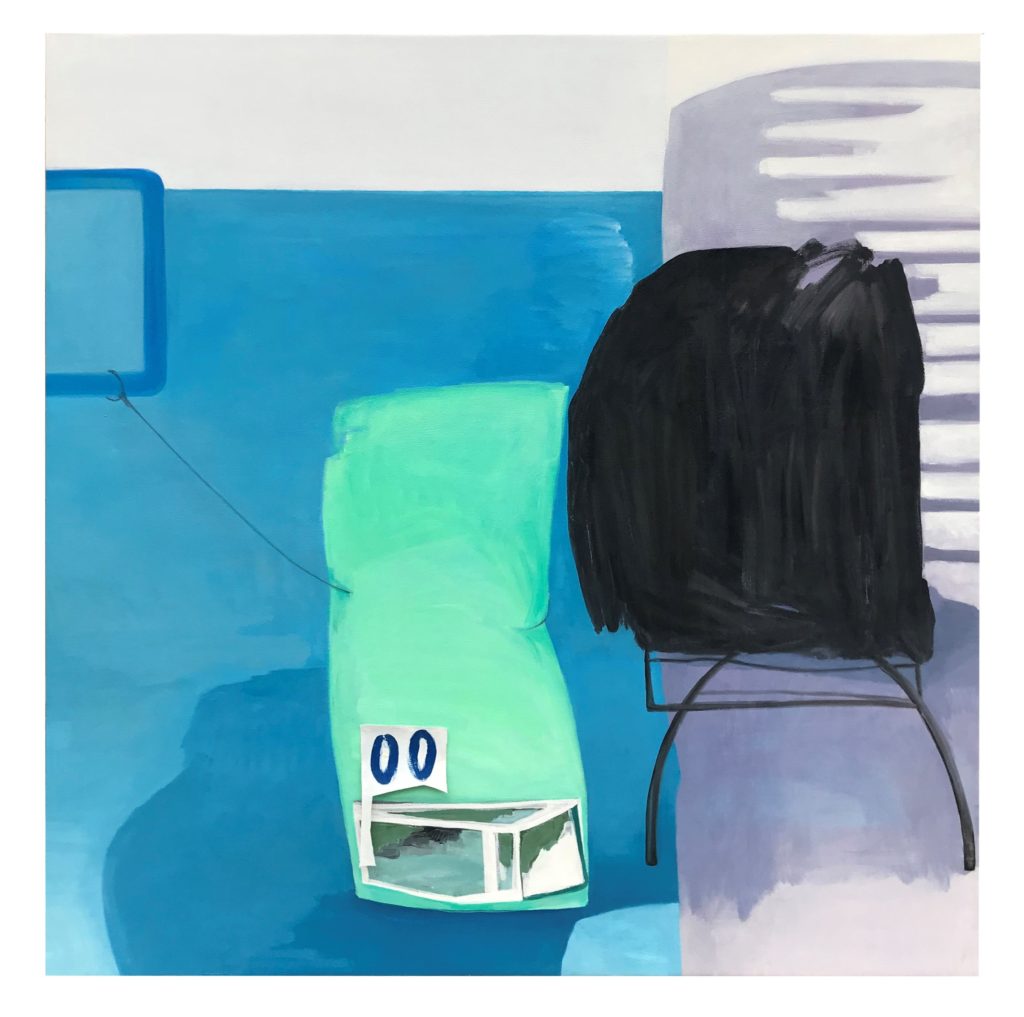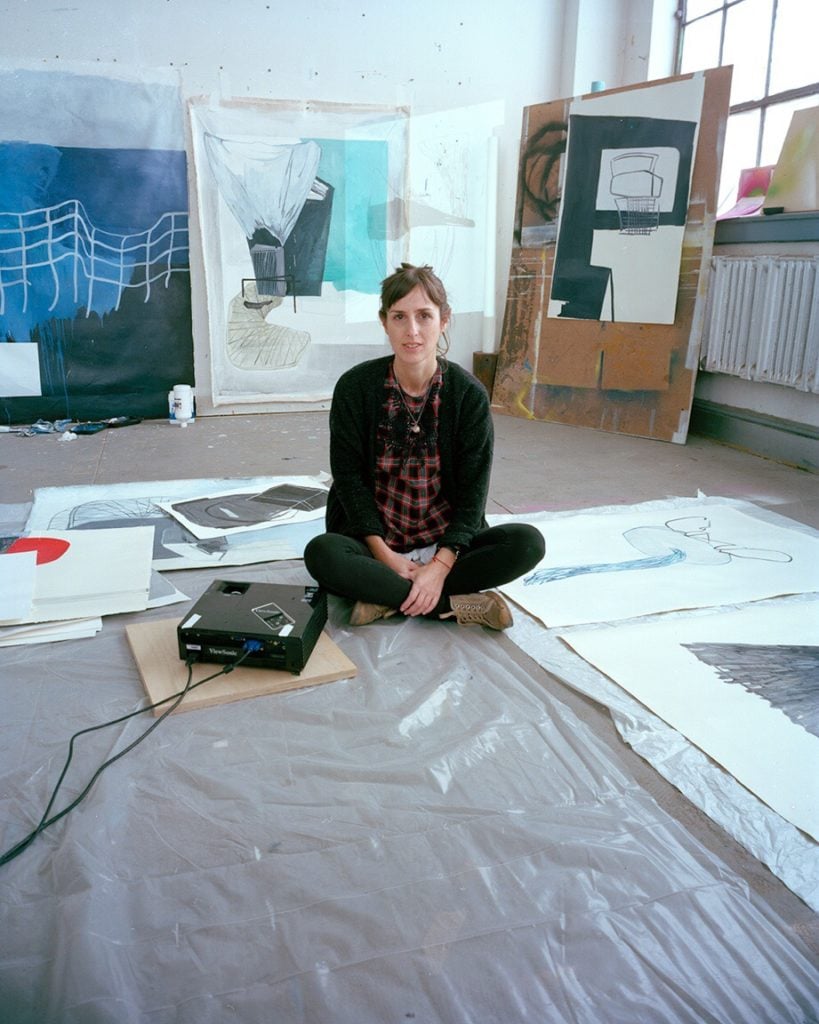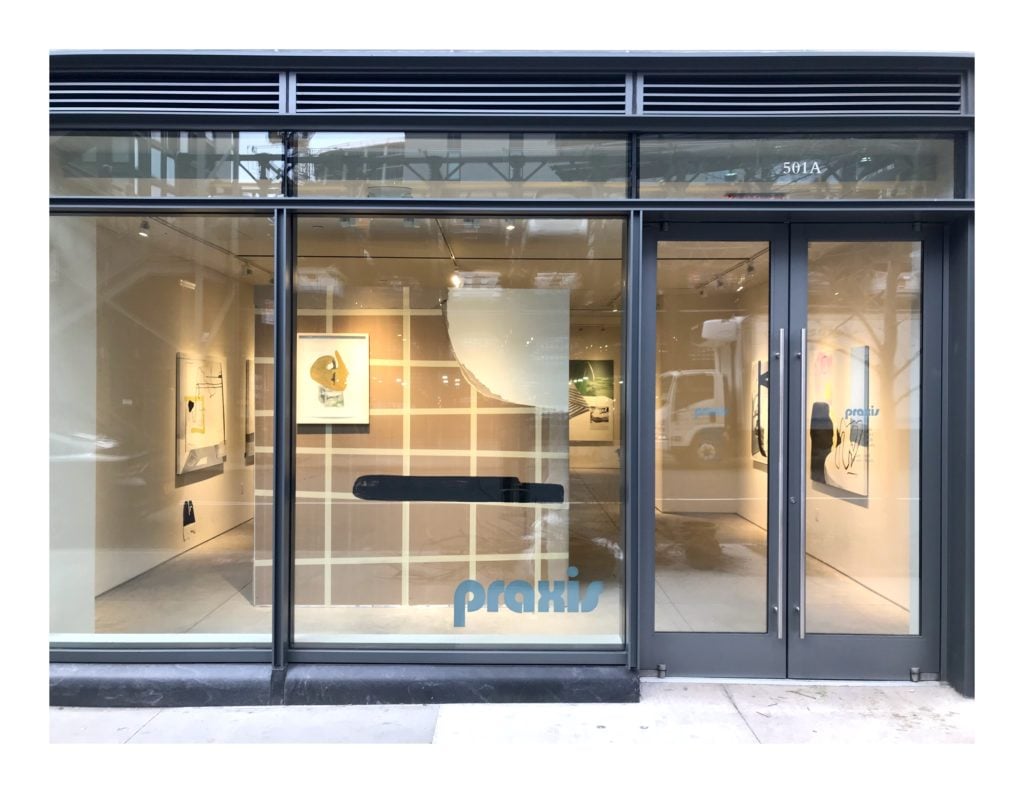Sofia Quirno’s Playful Paintings Explore the Strangeness of Day-to-Day Life


Artnet Gallery Network

There’s a painting in Sofia Quirno’s new show at Praxis called Atado con alambre (2018). The square, 48-inch canvas has what looks like an aquamarine pillow string-tied to a blue pipe, while an indistinguishable black object sits in the foreground. Roughly translated to “tied with wire,” the work is named after a Spanish saying that connotes an object that’s barely being held in place, as if jury-rigged together with a temporary, ad-hoc solution.
It’s a good metaphor for the Argentina-born, New York-based artist’s work. Mixing and matching everday objects in playful ways, Quirno’s paintings often appear is if they’re tied together with wire. It’s one of their strongest qualities.

Sofia Quirno, Atado con alambre (2018). Courtesy of Praxis.
The exhibition brings together roughly a dozen new paintings, drawings, and site-specific installations. The show’s title, “Heads and Tails,” is a reference to what Quirno considers the “in-between state” in which her work lives.
“Art, for me, is a space of possibility,” she says. “The kind of imagery I create exists in a space of in-between, where there are objects that seem recognizable, but they are not always easy to pin down. When you throw a coin into the air and it hasn’t yet revealed if it’s going to be heads or tails, there’s all these possibilities in between, all these worlds available. It’s about the idea that it doesn’t have to be one or the other; it doesn’t have to have a definition.”

Sofia Quirno in her studio. Courtesy of Praxis. Photo: Monica Frisell.
Another way to think about this space is the gap between the signifier and the signified. Her paintings, oil and acrylic compositions that often feature elements of collage and ink drawing, feature everyday objects whose utility is ambiguous: a table that doubles as a frame, for example, or a chair cushion that looks like a face. They “leave space for personal interpretation,” she says. Even for her, the meaning of her imagery changes over time.
“A lot of artists work with a preconceived idea of what they want to make,” she says. “I don’t. I usually start by making drawings based on everyday life—things that happen to me, things that I see on TV or on the street—then work based on those drawings. As I turn those drawings into paintings, I’ve abstracted the original images enough that I kind of forget where they came from, allowing them to become part of new thoughts, relationships, and stories.”

Installation view of “Sofia Quirno: Heads and Tails,” 2019. Courtesy of Praxis.
There are inside jokes and pointed references embedded in each, most of which are word-based and literal. Egg on a Table (2018), for instance, is about subverting a masculine Argentine expression. Meanwhile, Paddle (2018), a green and grey landscape with what looks like a body of water in the background, is a metaphor for the against-the-stream fight female artists have to engage in to be recognized.
“It’s a play on being a woman painter in New York City,” says Quirno. “Paddling through the paint. It’s kind of a joke but also a feeling I think a lot of us have.”

Installation view of “Sofia Quirno: Heads and Tails,” 2019. Courtesy of Praxis.
Indeed, much of Quirno’s work, from her paintings to her equally playful installations, embody a feeling—one that’s compelling, but ultimately hard to put your finger on.
She at least has an idea.
“I think of them as reflections on all the random associations we make, the little strange moments we have in day-to-day life—like when you look at something familiar from a new point of view, or you see an object that resembles something else,” Quirno says. “It’s about the strangeness of the world.”
“Sofia Quirno: Heads and Tails” is on view at Praxis through March 9, 2019.